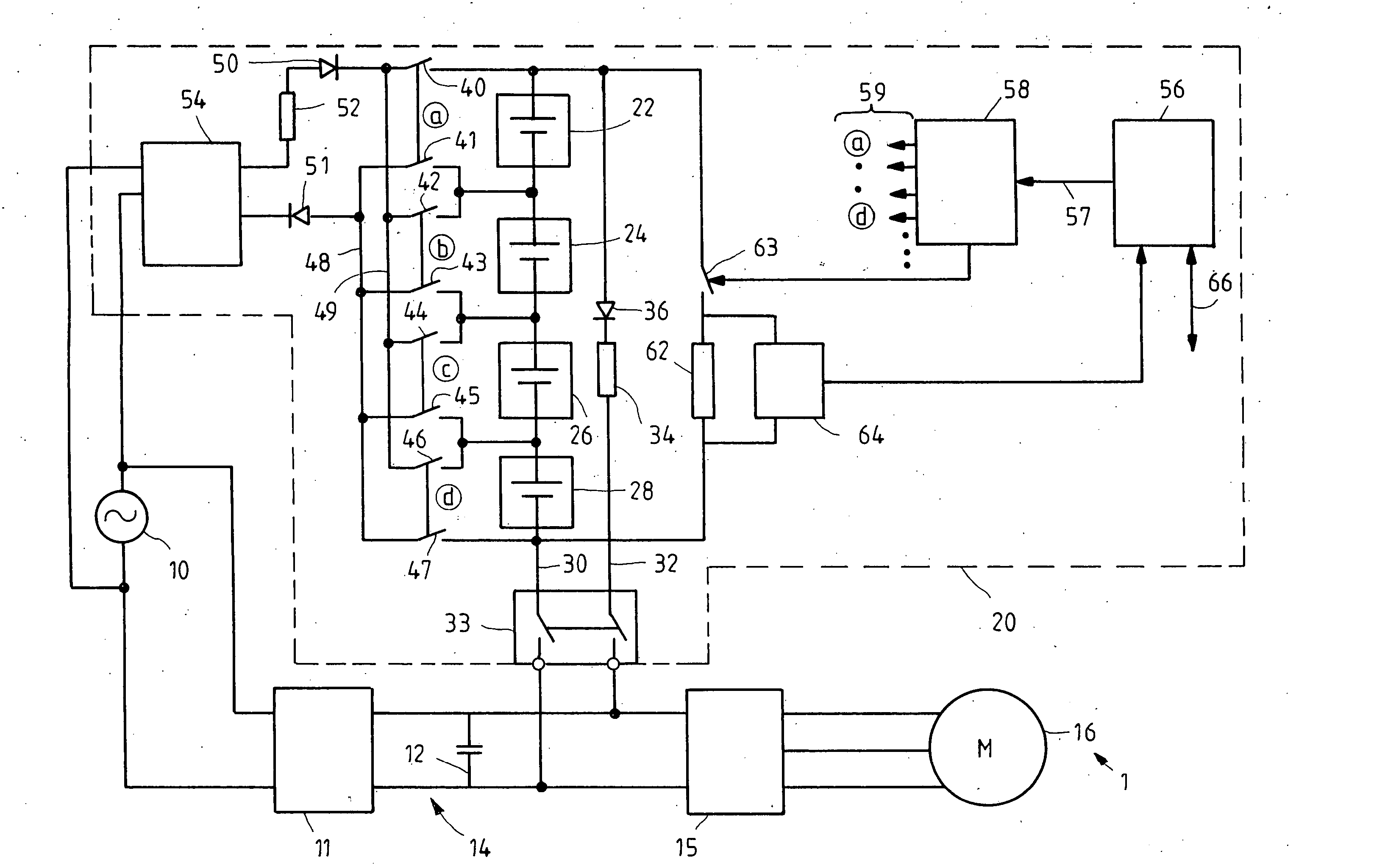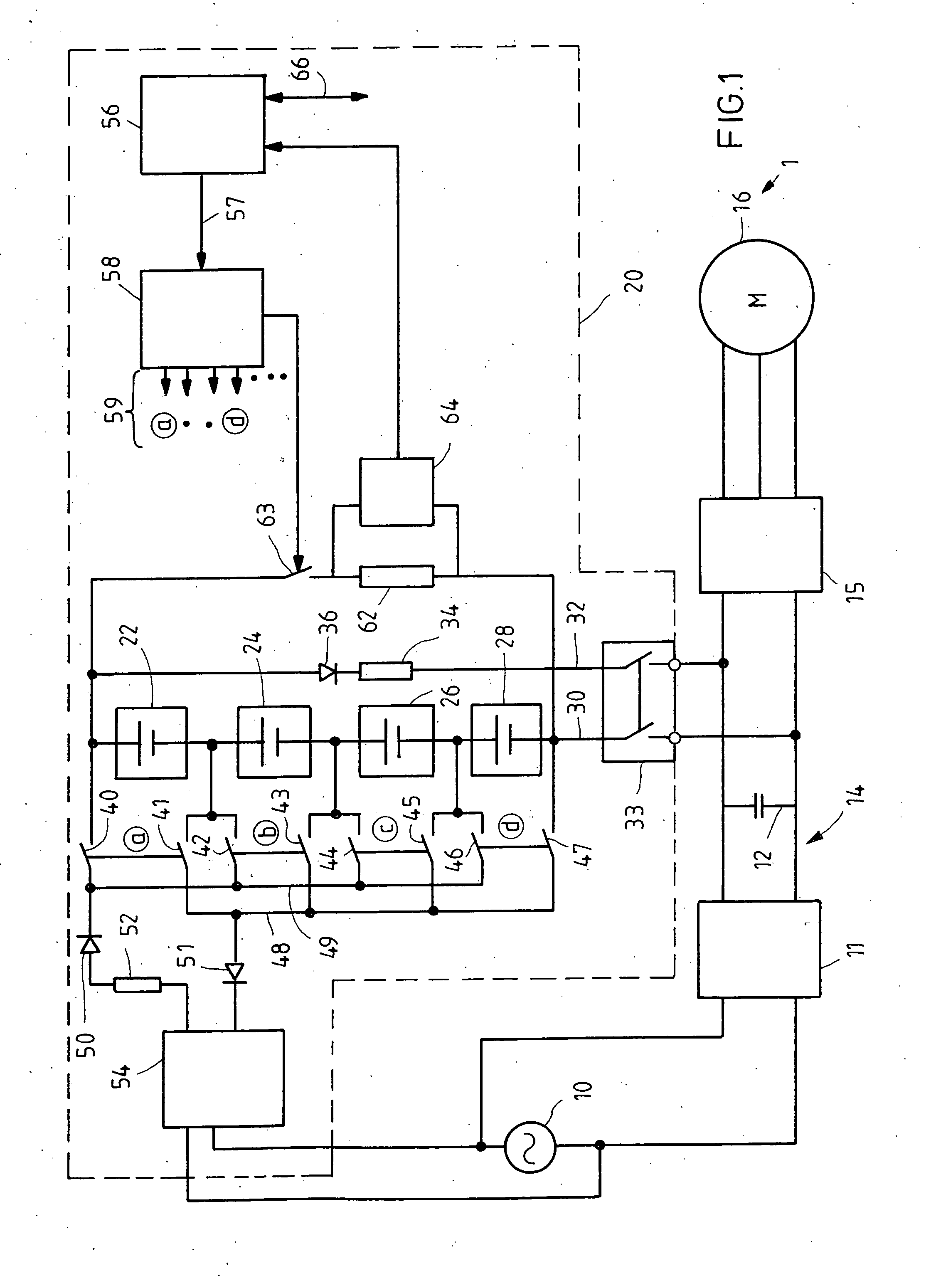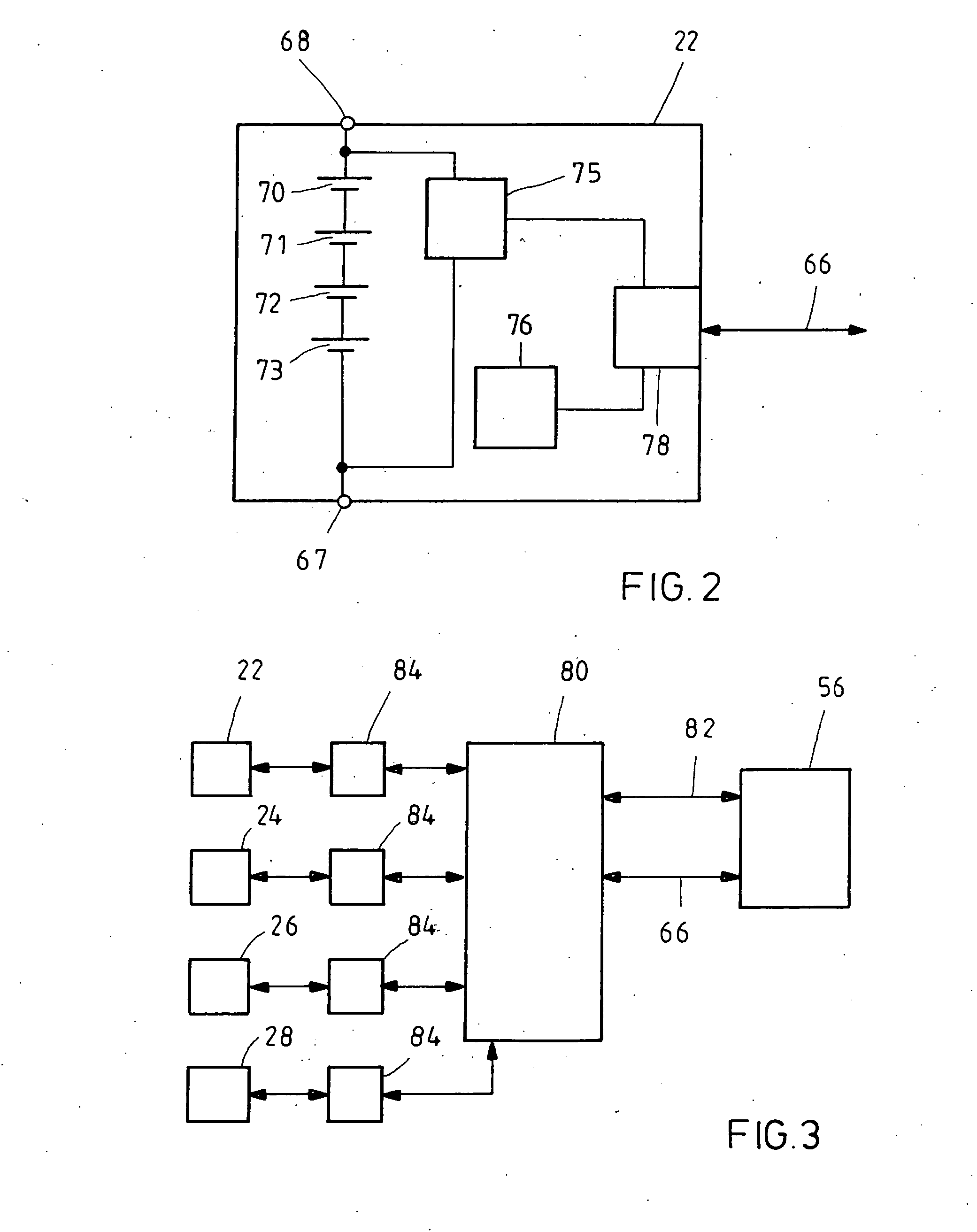Actuating drive and emergency energy supply device
a technology of actuating drive and emergency energy supply, which is applied in the direction of motor/generator/converter stopper, dynamo-electric converter control, instruments, etc., can solve the problems of increasing the cost of energy storage, the performance of the wind power installation may be adjusted to the wind speed, and the rotor hub is not suitable for conventional lead-acid or lead-gel accumulators, etc., to achieve optimal availability of actuating drive, increase internal resistance, and maintenance according demand
- Summary
- Abstract
- Description
- Claims
- Application Information
AI Technical Summary
Benefits of technology
Problems solved by technology
Method used
Image
Examples
Embodiment Construction
[0033]FIG. 1 shows a simplified block diagram of a three-phase a.c. power actuating driveO 1, for use as a rotor blade adjustment drive in a wind power installation. An a.c. mains system 10 supplies a rectifier 11, which, in turn, feeds a link capacitor 12 of a direct voltage link 14 with direct voltage. A d.c.-to-a.c. inverter 15 takes electrical energy from link 14, in order to drive a three-phase a.c. motor 16. D.c.-to-a.c. inverter 15 is activated by a control unit (not shown), so as to specify the three-phase current frequency with which motor 16 is driven. Rectifier 11, link 14 and d.c.-to-a.c. inverter 15 and the control unit mentioned form a frequency converter for driving motor 16.
[0034] An emergency energy supply device 20 is connected to direct voltage link 14. An electrical energy store is formed from eight accumulator units connected in series. Each of the accumulator units has a nominal voltage of 36 Volt. The energy store accordingly delivers a voltage of 288 Volt. D...
PUM
 Login to View More
Login to View More Abstract
Description
Claims
Application Information
 Login to View More
Login to View More - R&D
- Intellectual Property
- Life Sciences
- Materials
- Tech Scout
- Unparalleled Data Quality
- Higher Quality Content
- 60% Fewer Hallucinations
Browse by: Latest US Patents, China's latest patents, Technical Efficacy Thesaurus, Application Domain, Technology Topic, Popular Technical Reports.
© 2025 PatSnap. All rights reserved.Legal|Privacy policy|Modern Slavery Act Transparency Statement|Sitemap|About US| Contact US: help@patsnap.com



